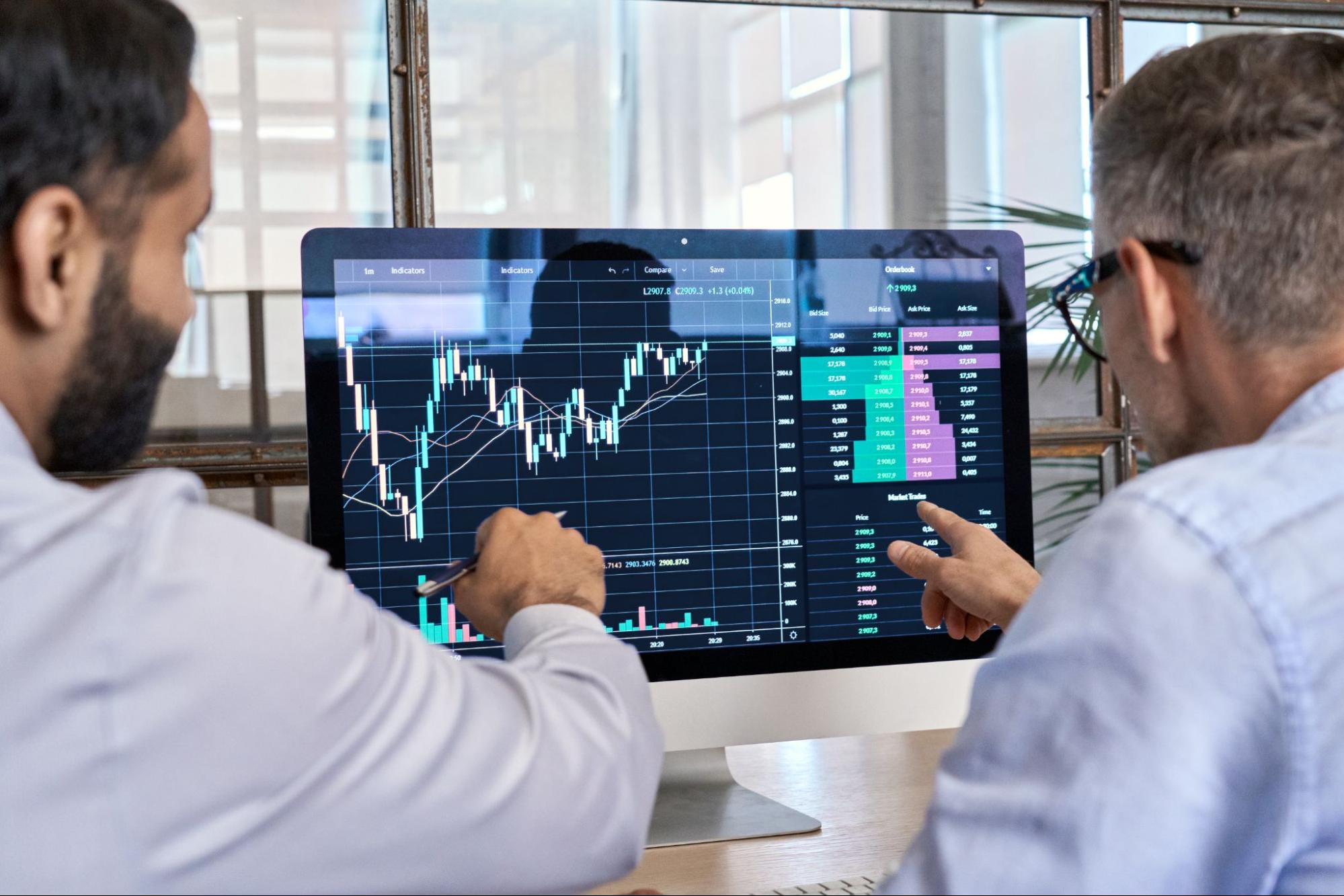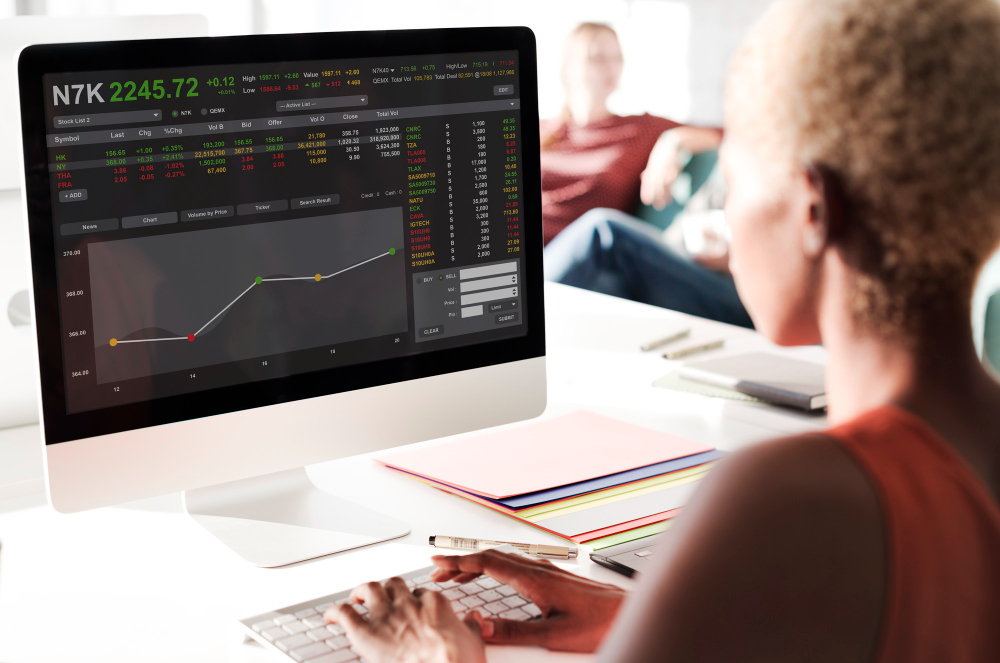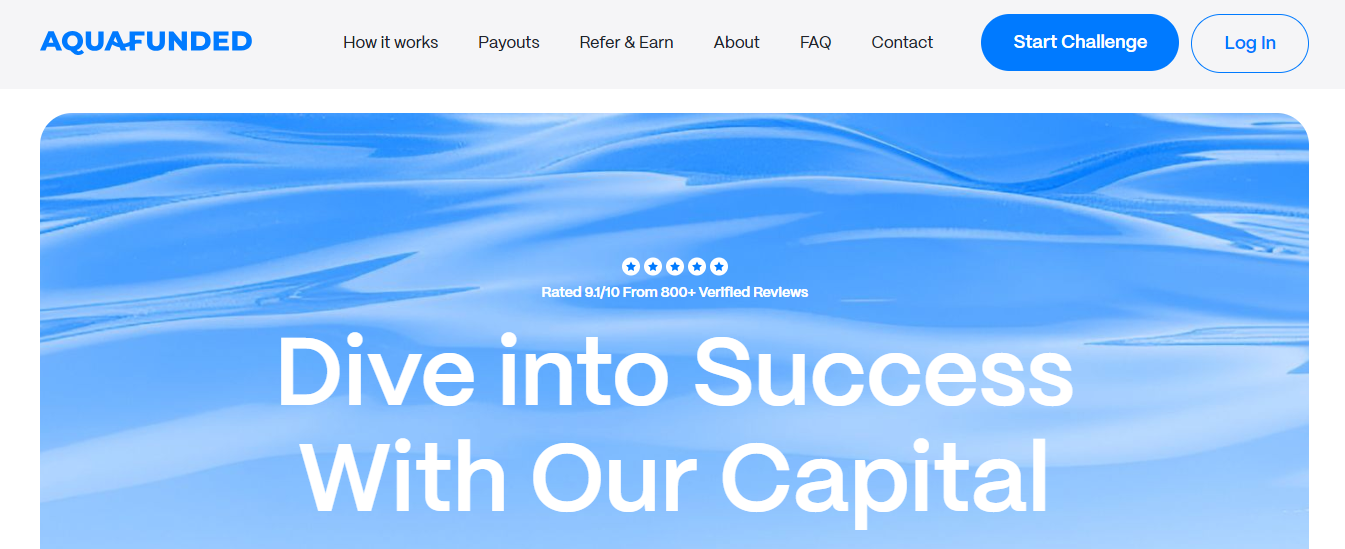Day Trading vs Options Trading: Detailed Comparison
Curious about day trading vs options? Learn the key differences, risks, and strategies to help you choose the right trading style.

Have you ever stared at a stock chart, wondering if day trading or options are your ticket to financial freedom? You're not alone. The world of Smart Money Trading is filled with opportunities for those who understand these strategies. Think of day trading as a fast-paced game of chess, while options trading is more like playing poker. Each has its risks and rewards. This guide will teach you how to maximize your trading potential with the capital you have, simplifying things along the way.
Aqua Funded's funded trading program can help you access the resources and guidance needed to succeed.
Benefits of Day Trading

A Path to High Returns
Day trading can be a lucrative endeavor if you play it right. You can tap into significant profits by leveraging trades, even with minor price shifts. If you’re adept at reading market trends and acting fast, the rewards can be substantial. It’s a way to potentially make money quickly, without the lengthy wait times associated with other investment strategies.
Embrace Freedom and Flexibility
One of the most enticing aspects of day trading is the freedom it provides. You can trade from anywhere with an internet connection, set your hours, and devise strategies that suit your style. This kind of autonomy is appealing for those who wish to break free from the traditional 9-to-5 work routine.
Sharpen Your Quick Decision-Making Skills
Day trading requires you to make swift decisions under pressure. You’ll need to analyze market conditions and execute trades quickly. This rapid-fire environment can be intellectually stimulating and satisfying for those who thrive in fast-paced settings.
Control Your Risk with Limited Drawdowns
Day traders close their positions by the end of the trading day, eliminating the risk of overnight market changes affecting their trades. This can help limit losses, giving traders a sense of control over their investments.
Enjoy Liquidity and Easy Access
Highly liquid markets are a day trader’s playground. You’ll always find buyers and sellers, making it easy to enter and exit trades. Additionally, modern technology and online platforms have made day trading more accessible than ever.
Learn Quickly from Immediate Feedback
Day trading offers real-time feedback on your trading strategies and decisions. You can quickly learn from mistakes and refine your approach, which can accelerate your development as a trader. It’s a fast way to gain valuable insights and improve your skills.
Related Reading
- How Much Money Do You Need to Start Trading
- How Long Does It Take to Learn Trading
- What Challenges Do Traders Face?
- Futures vs Stocks Trading
- Why is Trading So Hard
- How to Swing Trade
- How to Multiply Your Money
- How to Start Trading With No Money
Benefits of Options Trading

Maximize Your Investment with Cost-Efficiency
Options provide powerful leverage, allowing you to mimic a stock position at a fraction of the cost. Imagine buying 200 shares of a $80 stock, which costs $16,000. With options, you could get two $20 call contracts for just $4,000. This leaves you with $12,000 to explore other opportunities. For instance, if XYZ Corp. shares trade at $131, a $100 strike call might cost $34. Two contracts would total $6,800, far less than the $26,200 for the shares. This frees up funds and offers diversification.
Protect Your Portfolio with Reduced Risk
Options can act as reliable hedges, often safer than stocks. Unlike stop-loss orders, which can fail during volatile markets, put options allow you to sell at a set price, regardless of how low the stock price falls. For example, buying ABC Inc. stock at $50 with a stop-loss of $45 could result in a significant loss if the stock opens at $20. A put option, however, holds its value, providing insurance around the clock. Instead of owning stock, buying a call option limits your loss to the cost of the option. This strategy can protect your investment even if the market dives.
Boost Your Earnings with Higher Potential Returns
Spending less while earning nearly the same profit leads to higher returns. That’s the power of options. Consider a stock bought for $50 with a 10% return if it rises to $ 55. An option priced at $6 with an 80 delta gains $4 on the same move, yielding a 67% return. That’s far better than the stock’s 10%, however. At the same time, options can multiply profits, but a wrong bet risks losing your entire investment.
Explore More Strategic Alternatives
Options offer unparalleled flexibility. Synthetic positions allow creative solutions to achieve investment goals. Options let you play the market without broker restrictions. When stocks stagnate, options will enable you to capitalize on changes in time and volatility. Tailor strategies for market conditions, such as buying calls for a stock’s rise or puts for a fall. Advanced techniques, such as spreads, straddles, and strangles, enable investors to profit from market volatility swings.
Turn your trading skills into substantial profits without risking your capital. AquaFunded's funded trading program enables you to access accounts of up to $400,000 with flexible conditions, no time limits, easy profit targets, and a profit split of up to 100%. Join 42,000 traders worldwide who’ve earned over $2.9 million in rewards, all backed by a 48-hour payment guarantee. Start trading today with our instant funding options or prove your skills through customizable challenge paths and keep up to 100% of what you earn.
Day Trading vs Options: Detailed Comparison
.jpeg)
1. Definition and Nature
Day trading is the art of buying and selling stocks or other assets, such as ETFs or forex, on the same day. Traders aim to exploit small price changes by using technical indicators and market momentum, closing all positions before the end of the day to avoid overnight risks.
Options trading is a different animal. It’s about trading options contracts, which are derivatives that give you the right to buy or sell an asset at a set price by a specific date. It can be a standalone strategy or part of a broader play.
2. Risk and Reward Profile
Day trading is high-stakes due to its short time frames and rapid price shifts. Traders may use leverage to boost gains, but this also increases the potential for losses. With little room for error, success demands precision and emotional control.
Options trading carries its risks. Buyers risk only the premium they pay, but sellers, especially those writing naked options, can face hefty losses. The complexity of options, time decay, volatility, and strike prices adds layers to the risk.
3. Complexity and Learning Curve
Day trading is a fast-paced activity that relies heavily on real-time technical analysis. It requires traders to quickly grasp market movements and the impact of news.
Options trading is more intricate. Besides market direction, traders need to understand the Greeks, option premiums, time value, and the effect of volatility on pricing. Missteps here can be costly.
4. Capital Requirements
Day trading often requires more capital, particularly in regions like the U.S., where pattern day traders are required to maintain a minimum balance. With frequent trades, commissions and slippage can pile up.
Options trading might need less initial capital, especially when buying options. You can control larger positions with smaller investments by paying a premium, but swings in profits and losses can be dramatic.
5. Time Commitment and Trading Style
Day trading demands full attention throughout the trading day. Traders need to be quick, using multiple screens and fast internet to make trades in seconds or minutes.
Options trading is more flexible. Some strategies require less oversight, but short-term plays still necessitate active management, especially as expiration approaches.
6. Volatility and Market Conditions
Day traders thrive on volatility because it creates more profit opportunities. However, it can also lead to unpredictable losses.
Options traders can also benefit from volatility, but it cuts both ways. High volatility can raise option premiums, which is good for sellers but could hurt buyers if the stock doesn’t move enough before expiration. Timing is crucial due to time decay.
7. Suitability for Different Trader Types
Day trading suits people who handle pressure well and can make quick, decisive moves. It’s best for those who can focus entirely on the market during trading hours.
Options trading is better for those who are strategic and analytical. If you enjoy planning scenarios and weighing probabilities, this game might be for you.
Looking to leverage your trading expertise without risking your capital? AquaFunded’s funded trading program offers access to accounts of up to $ 400,000 with flexible conditions, including no time limits and up to 100% profit splits. Join over 42,000 traders who have already earned more than $2.9 million in rewards.
Related Reading
- What Happens if You Blow a Funded Account
- How to Become a Professional Trader
- Best Market to Trade for Beginners
- Tips for Day Trading
- Common Trading Mistakes
- Margin vs Leverage
- How Much Can You Make Day Trading With 100k
- Scalping Trading Strategy
- Margin vs Leverage
- Best Time Frame for Day Trading
How to Day Trade Options in 6 Steps

Unlock Capital with Aqua Funded
Ever dream of trading big without risking your own money? AquaFunded is your backstage pass to trading accounts as large as $400K. Forget about time limits and rigid rules. Aqua Funded offers instant funding and customizable challenges, so you keep up to 100% of what you make. Join 42,000 traders who have already pocketed over $2.9 million. Additionally, payment is deposited into your account within 48 hours. It’s all about turning your skills into substantial profits without the headache.
Master the Basics of Options
Before jumping in, get a firm grip on options trading. Options are contracts giving you the right to buy or sell an asset at a specific price and time. There are two types: calls and puts. Call options let you buy the asset; put options allow you to sell. Understanding these fundamentals is your first step toward success.
Build a Concrete Trading Plan
A solid trading plan acts like a road map for day trading options. Outline your entry and exit points, risk management strategies, and profit targets. Know when to cut your losses and when to take a profit. This plan isn't just a suggestion; it's your blueprint for navigating the market.
Leverage Technical Analysis
Use technical analysis to find trading opportunities. This involves reading market data through charts and indicators. Popular tools include moving averages, Bollinger Bands, and the Relative Strength Index (RSI). These can help you spot trends and make informed decisions.
Control Your Risk Like a Pro
Risk management is crucial in options trading. Never risk more than you can afford to lose. Use stop-loss orders to mitigate potential losses. These orders automatically sell your security once it hits a certain price, keeping your losses in check if a trade turns south.
Track Progress with a Trading Journal
A trading journal is your scorecard. Record details about each trade entry and exit point, position size, and outcomes. Use this data to analyze your performance and refine your strategy. It’s like having a coach in your corner, pointing out areas for improvement and helping you stay on track.
Join Our Funded Trading Program Today - Trade with our Capital and Keep up to 100% of the Profit

Imagine leveraging your trading skills to turn substantial profits without risking your capital. AquaFunded offers an opportunity like no other, granting traders access to accounts of up to $ 400,000. It stands out with the most flexible trading conditions you can find, no time constraints, straightforward profit targets, and a profit split that reaches up to 100%.
Over 42,000 traders worldwide have already collected more than $2.9 million in rewards. And, with a 48-hour payment guarantee, you can rest easy knowing you won’t be waiting long for your hard-earned cash. You can start trading today with instant funding options or prove your skills through customizable challenge paths. And remember, you keep up to 100% of what you earn.
Day Trading vs. Options Trading: A Quick Look
Day trading and options trading are both popular strategies, but they require different skills and mindsets. Day trading involves buying and selling securities within the same trading day, aiming to capitalize on short-term price movements. It requires quick decision-making, technical analysis, and the ability to manage risk.
On the other hand, options trading involves buying and selling options contracts, which give the holder the right, but not the obligation, to buy or sell an underlying asset at a predetermined price. Options trading requires a deep understanding of options pricing, volatility, and the ability to anticipate market movements. Both strategies can be profitable, but they require different skill sets and approaches. Join over 42,000 traders who’ve already collected more than $2.9 million in rewards.
Related Reading
- Why Do Most Day Traders Fail
- Is Day Trading Profitable
- How to Take Profits in Trading
- Fair Value Gap Trading
- Best Time of Day to Trade Stocks
- How to Make Money Online Trading
- Prop Firms With No Time Limit
- Different Stock Trading Strategies
- Swing Trading Prop Firms
- Best Technical Indicators for Day Trading


